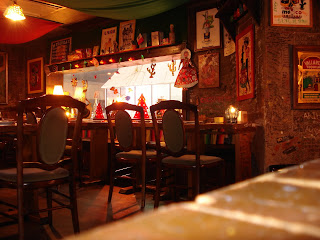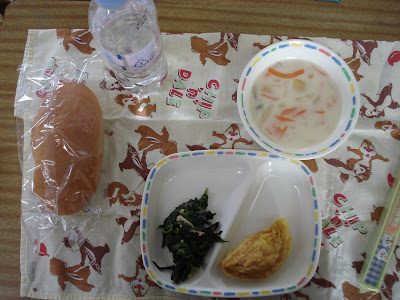Fukui Prefecture Dinosaur Museum
The Fukui Prefecture Dinosaur Museum is one of the "World's Three Great Dinosaur Museums.” It holds remains of over 40 species (not just dinosaurs). Getting to the museum can be an adventure, but it is well worth the visit. The museum is inside a large park. Just outside of the entrance to the museum is a small playground filled with dinosaur statues. The slide even ends with you stopping just short of a T-Rex, waiting with an open mouth.
The inside of the museum is just as impressive. You first take a long escalator down to the bottom floor. It ends with a hallway filled with fossils on the walls. As you walk down the hallway you eventually come to a representation of a fossil bed from Wyoming, USA. Then you enter the main hall, filled with dinosaurs. Some are actual fossils, and some are replicas. There are also some automated dinosaurs in the back part of the room.
In addition to the dinosaurs, there is also an exhibit on various rocks and minerals. The second floor has a timeline of the history of life, including early organisms, leading up to modern animals. You can see how animals have changed over time, and the link between dinosaurs and birds.
The second floor has a fossil lab, where you can watch people cleaning fossils. There is also a room, called the Dino Lab, with fossils you can hold and touch, as well as some quizzes (Japanese only). You can see how your weight compares to dinosaurs. In the middle of the room is a replica of a T-Rex.
How to get there:
By car- Parking is free at the park.
On the Hokuriku Expressway, get off at either the Fukui Interchange, or the Maruoka IC.
From the Fukui IC it takes about an hour. Take route 158 to route 157.
From the Maruoka IC it takes about 30 minutes. Take route 416.
There are maps and more detailed information (in Japanese) at the link above.
By train/Bus- http://www.dinosaur.pref.fukui.jp/guide/access.html
From Fukui station, take the Echizen Tetsudo for Katsuyama station. It will take about an hour. From there, take the community bus to the museum (about 15 minutes).
Or, you can take the JR Etsumi-Hoken line from Fukui station to Echizen Ono, and take a taxi from there (about a 20 minute taxi ride).
The link above has the bus times (Japanese only).




















































